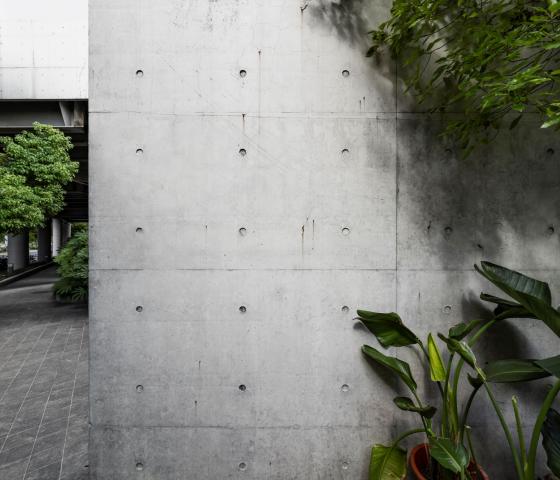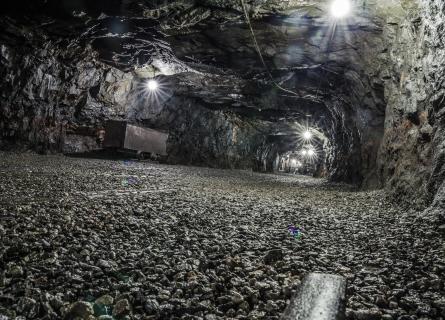
Concrete needs concrete changes - innovation and new technologies are the answers
The origins of cement go back to ancient Greece and Rome, and it is still the foundation for modern-day concrete. Population growth and urbanisation are driving building activity, and the need for materials for construction is growing at rapid pace.
Concrete, with cement being the key ingredient, is the most widely used construction material globally and meets the challenge of climate change like many other materials, that are either fossil-based or energy-intensive in the production phase. This puts the construction industry under intense pressure to significantly change how cement and concrete are produced in order to reduce their carbon footprint. Each year, more than 4 billion tonnes of cement are produced, accounting for around 8 percent of global CO2 emissions [1].
The big dilemma – massive demand growth expected, even more pressure to cut emissions
Cement is the world’s most man-made material. Curbing its GHG emissions is key for the building sector in order to meet the targets of the Paris Agreement. The building sector as a whole is looking for many ways to lower its emissions, for example, by using more timber, wood and wood-based materials, which actually store carbon. However, this will not be the answer to all the challenges that concrete has. The future mega-cities, and ever-growing need for city infrastructures, will push the need for concrete to the next level. It is not only limited to housing but also providing clean water, sanitation and energy services typically rely on concrete. The cement sector is facing a significant increase in demand, with production estimated to reach over 5 billion tonnes per year over the next 30 years. At the same time, in order to meet the Paris Agreement’s targets on climate change, its annual emissions will need to decrease by at least 16 percent by 2030 [1]. The big dilemma is obvious – how to meet the growth in demand and significantly cut CO2 emissions at the same time?

Short-term solutions have several pitfalls
From a technical perspective, there are a number of solutions for reducing the emissions associated with cement production, such as blending clinker with alternative materials and the use of novel cements. Clinker substitution is not only a very effective solution, but also one that can be deployed with low cost as it does not generally require investment in new equipment or changes in fuel sources. The raw material supply, for example, helps determine which technologies are viable in a given location.
Clinker substitutes such as fly ash (a by-product of coal-fired power plants) and granulated blast furnace slag (GBFS, an ironmaking by-product) are currently being produced in huge volumes, for example, in China and India. However, the future transition to hydrogen-based steel making will dramatically reduce the amount of GBFS created as a potential clinker substitution material. The situation is similar to fly ash, as societies are making the change from fossil power plants to renewable energy sources. Obviously, this transition takes time, but it is inevitable.
Think circular – see the potential
In order to replace these clinker substitutes, an alternative-clinker technology area, the use of geopolymers, could be expanded. Aside from fly ash or GBFS, geopolymer cements also consist of secondary raw materials such as metakaolin, calcined clays, zeolite etc., which are source materials containing aluminosilicate and alkali solutions [2]. Geopolymers are a perfect example of circular economy: it has been proven through extensive research and development work that geopolymer concretes already show very good compressive strengths from early curing times and they can be considered a viable alternative to traditional concrete based on Portland cement [3].
Based on AFRY’s vast experience in various industrial slag reduction projects, we can see that there are several potential pyrometallurgical slags available in the base metals industry for utilization in the concrete industry. These slags can either be used directly as clinker substitution materials or for geopolymer production. The key for application is the molten slag modification. With the advancements in digitalisation solutions, like AFRY Smart Site, proven and existing pyrometallurgical slag cleaning processes can be further optimized in order to achieve better product qualities. This then enables higher utilization degrees of these secondary raw materials in clinker production.
While valuable metals are reduced and circulated back into production, the composition of the remaining slag can be optimised for geopolymer concrete applications. The transformation of the cement industry is part of the core of AFRY´s mission: “We accelerate the transition towards a sustainable society”.
Sources:
[2]: “Geopolymers as an alternative to Portland cement: An overview”; N.B.Singha, B.Middendorf; Construction and Building Materials. Volume 237, 20 March 2020.
[3]: “The Possibility of Using Slag for the Production of Geopolymer Materials and Its Influence on Mechanical Performances—A Review”; Brădut, Alexandru Ionescu, Adrian-Victor Lăzărescu and Andreea Hegyi; 14th International Conference INTER-ENG 2020 Interdisciplinarity in Engineering, Mures, , Romania, 8–9 October 2020.

